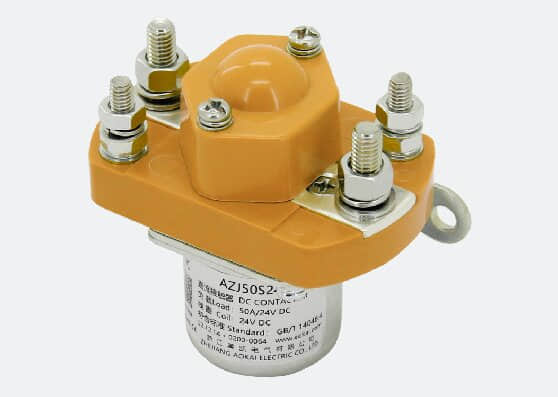- Home
- Product
- Solution
- About
- Download
- Glossary
- News
- Contact Us
- language

High Voltage Direct Current Contactors: An Innovative Force in the Power Sector
With the growing demand for electricity and the rise of renewable energy sources, high-voltage direct current (HVDC) technology is increasingly becoming an important innovation in the field of power transmission and distribution.One of the core components of an HVDC system is the high-voltage DC contactor, which plays a crucial role in the stability and efficiency of the power grid. In this paper, we will discuss the working principle, application areas and impact of HVDC contactors on the power industry.
1. Working principle of HVDC contactor
A high-voltage DC contactor is a key device used to control high-voltage DC current. It works similarly to an ordinary electromagnetic relay, but it has to handle higher voltages and currents.HVDC contactors adjust the DC voltage to maintain the stability of the power system by controlling the on-off of the current.
These contactors usually contain an electromagnetic coil and a pair of movable contacts. When current passes through the coil, it creates a magnetic field that attracts the contacts together, closing the circuit. When it is time to break the circuit, the current in the coil is cut off and the contacts separate, opening the circuit. High voltage DC contactors must be able to reliably perform on-off operations at high voltages to ensure the stability of the power system.
2. Application areas of HVDC contactors
High voltage DC contactors are widely used in the following fields:
2.1. Long distance power transmission
HVDC technology has obvious advantages in long distance power transmission. By using HVDC contactors, power utilities can transmit power from a distant power station to an urban or industrial area in a high-energy manner, reducing energy losses. This is particularly important when connecting power grids in different geographical locations.
2.2 Integration of renewable energy sources
Renewable energy sources, such as wind and solar, are often widely distributed and volatile, and HVDC technology with high-voltage DC contactors can help to balance the volatility of these energy sources, deliver excess power to where it is needed, and improve the reliability of the power system.
2.3. Interconnections
International power interconnections also benefit from HVDC technology. By establishing HVDC connections between different women plus, electricity can be transmitted across borders, providing more energy options, increasing the stability of energy supply, and facilitating the internationalization of energy markets.
3. Impact on the power industry
The introduction of HVDC contactors has had a positive impact on the power industry:
3.1. Increased energy efficiency
HVDC systems increase the efficiency of power transmission by reducing transmission losses. This means less wasted energy, lower energy costs, and less impact on the environment.
3.2. Promoting renewable energy
With the rapid growth of renewable energy sources, HVDC technology provides key support for integrating renewable energy sources into the power network. This helps to reduce dependence on fossil fuels and lower greenhouse gas emissions.
3.3. Enhancing the stability of power networks
The use of HVDC contactors in power networks helps to improve system stability and controllability. This is essential for responding to emergencies and maintaining the continuity of power supply.
In conclusion, HVDC contactors are a key technology in the power sector and are driving the power industry towards greater energy efficiency, reliability and sustainability. As renewable energy continues to grow in popularity and demand for electricity increases, HVDC technology and HVDC contactors will continue to play an important role in bringing more innovations and improvements to our power systems.
